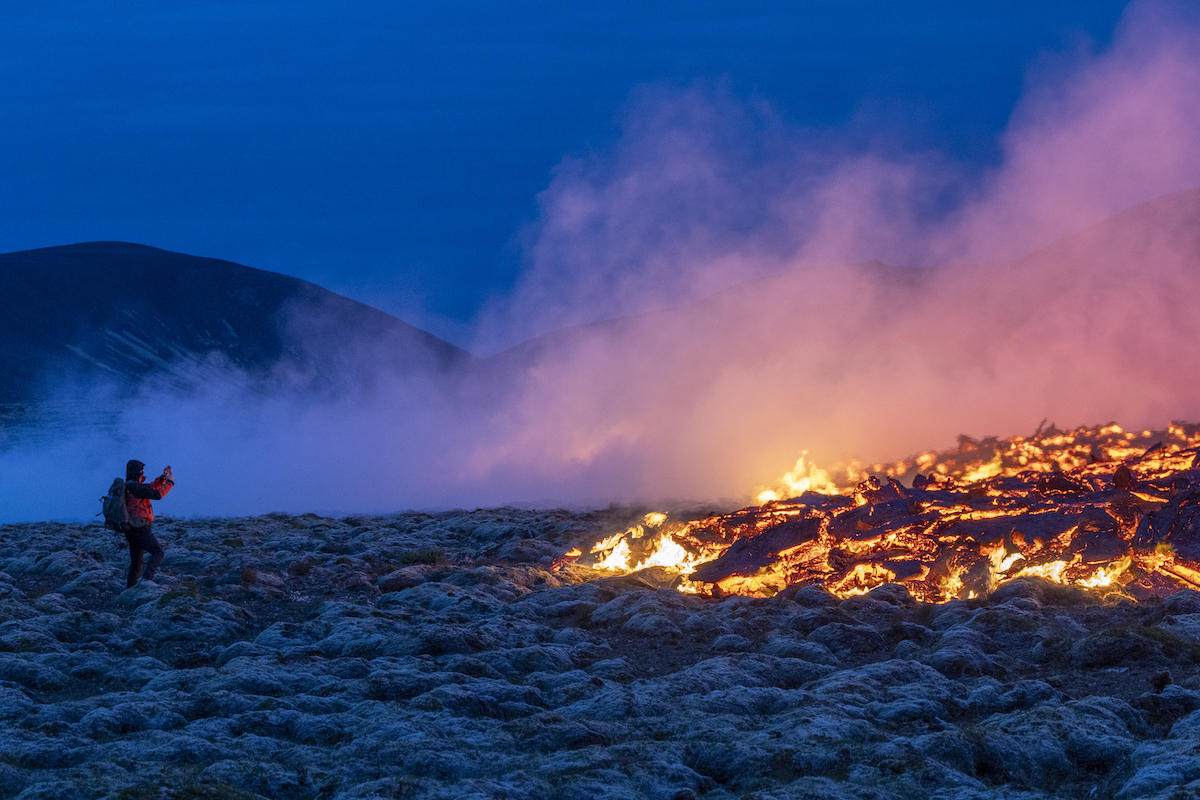

This week, a volcano erupted in Iceland for the third time in three years. It captured the country’s and the world’s attention as the eruption was live-streamed on the internet. But it’s also forced the Icelandic government to warn people about the hazards of getting up close and personal to an erupting volcano.
Videos by Outdoors
“Of course, it is amazing to witness the presence of the natural forces but let’s be careful and keep the instructions of the Public Protection in mind,” said Iceland’s President Gudni TH. Johannesson in a statement on Facebook.
Johannesson explained that the government closed off a “large danger zone” on the Reykjanes Peninsula, located in the southwest area of the country. The fear is that anyone in the area might breathe in dangerous gases. Yet, he also added that you can still watch from a “safe distance.”
You should avoid volcanos and the hot molten rock inside of them. Absolutely and without question. However, it makes us wonder: how can you see a volcano safely? If you’re the type of intrepid traveler who wants to know, read on.
For this article, we collected advice from the Guide to Iceland, the self-proclaimed top travel agency in the country, as well as from the Centers for Disease Control and other government agencies.
Risks of an Erupting Volcano
According to the CDC, volcanos pose a variety of risks because of their destructive power. They can cause floods, mudslides, power outages, wildfires, and contaminate drinking water. In the past 200 years, these types of reactions have killed almost 200,000 people.
However, if you want to voluntarily watch a volcanic eruption in person, the danger is more direct. In addition to the lava flow, volcanos spew excessive heat, dangerous gases, ash, and rocks. Plus, people have died from volcanic blasts. To keep from dying, the Guide to Iceland has six tips.
1. Stay on high ground
The first rule is to stay on high ground and don’t go into valleys. While you obviously want to avoid being burned alive, you also want to avoid gas exposure.
According to the U.S. Geological Survey, volcanic gases are a combination of water vapor, carbon dioxide, and sulfur dioxide, which will irritate your eyes, skin, and respiratory system and eventually kill you.
2. Keep your back to the wind
The second piece of advice is to keep your back to the wind. This is because you don’t want to be in a position where volcanic debris is blowing toward you.
3. Don’t step on lava
The third rule may sound obvious, but piping-hot lava isn’t always glowing on the outside. During a recent eruption, solid lava might have a thin crust on the outside, while the inside is still boiling hot. If you step on it, you could break the crust and, well, destroy your shoes or worse.
4. Plan your trip
More often than not, you’ll have to hike to the volcano, and there’s no telling how long you’ll have to wait before it erupts, so you’ll want to map out your hike and pack food and water.
5. Check the weather
Number five piggybacks on number four. You’ll also want to know the weather conditions before you make the trek so you can adequately prepare.
6. Listen to local authorities
Destructive forces, such as volcanic eruptions, are inherently fascinating but can also be horrific and deadly. That’s why the last piece of advice is to check with the local authorities that monitor the eruption site. If they close the area, don’t go.
For more information on volcano preparedness, check out the guidelines on the website Ready.gov.









